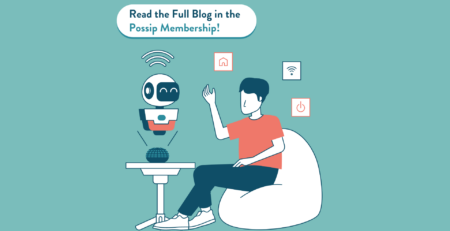The term “Zoom Fatigue” has been floating around in a lot of articles and media stories since March when most employees had been working remotely for a few weeks. So what is Zoom Fatigue and will it impact schools that go virtual this fall?
Zoom Fatigue is the term used to describe being exhausted from remote work and being on video calls (whether it’s zoom or another video meeting platform). There’s actual science behind it, too. The cause of it comes from a lot of different aspects of virtual work.
A few reasons for the exhaustion include:
- Increased Focus on Conversation: Employees have to spend more mental energy focusing on the conversation when they can’t easily ask clarifying questions (without awkwardly trying to unmute and cut someone off) or quickly whisper to a neighbor to bring you up to speed if you missed something.
- More Discipline to Avoid Distractions: The constant thought that employees could be checking emails or surfing the web makes it hard to stay present in the meeting. It takes a lot of mental energy to talk yourself out of doing that.
- Social Anxieties Without Non-Verbal Cues: Many people rely on non-verbal cues to feel comfortable in a conversation and read the room when they’re talking. When that’s not possible, people can worry that they are not being perceived well. It takes a lot of mental energy constantly questioning yourself and the social aspects of a video meeting.
- Worries About Home Issues Interfering: There’s additional stress on people worrying that a parent, child, or another roommate will disrupt the conversation in the background. The worries that employees may be viewed as “unprofessional” if these disturbances happen could be in employees’ heads for the entire day, especially when school is virtual.
- Increases Self-Consciousness: When you’re in a normal work meeting, you don’t think about yourself being stared at. During a zoom meeting, you are made very aware that everyone is staring at your face. That can be a huge mind game, and many people end up watching themselves during an entire meeting to make sure their face is emoting properly. This can lead to missing important information, or just spending extra mental energy worrying about everyone looking at you (including yourself!)
The list actually goes on. These are just a few of the factors that are contributing to Zoom Fatigue and are mostly focused on how they impact working adults. But what about our children who will be in virtual school starting in the fall? They will also have Zoom Fatigue for these reasons and even more new reasons will be added that cause mental strain on young children and teens.
This may have sounded like all negative information, but there are ways you can help your child proactively and combat this Zoom Fatigue.
-
Space Out Social Zooms When Possible:
Planning for additional social times for your child is important during this time. If you’re planning a Zoom or video chat “hangout” for your child, make sure to not plan them back to back with a class. Give some time for them to be off-screen before moving on to a social video conference.
-
Increase Socialization Time:
Use this time to spend a lot of time building relationships within your family. If you don’t feel comfortable allowing your child to see other kids in person right now, it’s a great opportunity to do more intentional face-to-face socializing with family members. Have dinners, play outdoors together, go on walks, play board games, just talk on the patio. This is a great time to build positive relationships within your family unit.
-
Take Outdoor Breaks:
Getting your children outside relaxes their eyes and minds. When they have breaks, make them go outside. You can tell them to take a walk around the block, ride their bikes for 5 minutes, or just stare off into space. Even if they just read outside, being outside and in nature can get them out of the sometimes unnatural feeling of Zoom.
-
Have Cameras Off Breaks, If Possible:
If your teacher is okay with students turning their cameras off during class, this would be a helpful way to help your child combat Zoom Fatigue. Let your student choose a 5-minute window when they might turn their camera off. Reach out to your teacher to see if this is an option. If not, understand that it may be for attendance or engagement reasons, but it’s worth asking if occasionally they can turn the camera off during different parts of the lesson.
-
Talk to The School About What Works and What Doesn’t:
Share any praise or feedback with the school about at-home learning. If they don’t know what is contributing to student’s Zoom Fatigue, they can’t fix it. Be open and transparent in a way that builds a respectful partnership. Possip is a great way your school can use to do this.
-
Have Your Students Make Their Lunch:
If your child is in back-to-back meetings, sometimes they need to use and engage with a different part of their brain. Taking 10 minutes to make their own lunch, a tactile activity, can help them feel more connected to concrete objects and things. It also can give them a sense of agency and control as they choose what to make and what to eat.
-
Help Students Avoid Multitasking:
Make sure students’ physical space is not cluttered and that they have the Zoom view on full screen to avoid pulling up other websites or online activities. This helps keep them focused and avoids potential distractions.
-
Build-in Breaks:
Build-in brain breaks during the day for your child and makes sure they step away from the screen. A good guideline for quick breaks that I’ve heard is to look away from the screen for 20 seconds every 20 minutes. Brain breaks are crucial for students’ focus and mental energy.
-
Phone Calls for One-on-One Help:
When possible, if your child feels overwhelmed with Zoom Fatigue, try to work with the teacher to schedule one-on-one tutoring or office hours via phone instead of video.
-
Teach Your Child Mindfulness Activities:
Working on social-emotional skills and mindfulness can limit the amount of multi-tasking your child does, increase social-emotional health, and increase their ability to focus and be present. Here’s one example of a mindfulness activity from Move the World.
Sign up to keep learning how to support your kid’s learning at https://possip.com/contact-possip/.





